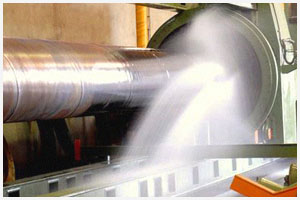
The Pressure Equipment Directive (2002/97 / EC) was issued by the Ministry of Industry and Trade in the same year, based on the 23/97 / EC Pressure Equipment Directive for pressure equipment to be put on the market in the EU market in 23. Pressure products to be put on the market in European Union countries must comply with the directive criteria.
Products that do not comply with the provisions of the relevant directive are not permitted to be placed on the market. Within the scope of harmonization with the European Union, these regulations have been adapted to our law.
In terms of human health and employee safety, pressurized equipment are hazards that can even cause fatal accidents if the necessary controls are not carried out or used correctly. Especially the pressure vessels, which are widely used in industry, if not used correctly, their explosion creates a bomb effect and causes great damage to the people and goods in the environment.
Controls are not made in a timely and appropriate way, cheap products have been preferred instead of safe products, have not been used in accordance with the instructions, have not been checked daily, used by untrained people and so on. It can be dangerous for various reasons, such as situations that may threaten work safety.
It requires hydrostatic trial pressure tests for pressure vessels, including all legal regulations and directives. These tests should be done by people trained in pressure test procedures and safety issues. At the same time, while conducting experiments, it is necessary to use appropriate test tools, to use suitable facilities for experiments and to test by people who are familiar with the manuals of the pressure equipment in question.
In the case of fire extinguishers which are unlikely to be conceivable due to their size when they are mentioned as pressurized equipment, it is a dangerous equipment in the class of pressurized equipment. If the body or exterior of the fire extinguisher meets one or more of the following conditions, there is no need to perform hydrostatic pressure tests for this fire extinguisher, it must be destroyed immediately:
If patches or repairs have been made by soldering, welding or a similar method
If the cylinder body and its outer surface are damaged
If corrosion is present on pitting
If the fire extinguisher is exposed to a fire
In a stainless steel fire extinguisher, if calcium chloride type extinguishing agent is used
If the extinguisher has not been used for a long time
Fire extinguishers which are evaluated in pressurized equipment class should be subjected to hydrostatic pressure tests at intervals not exceeding 10 year. However, the criteria and standards described in this regulation require not only regular tests but also hydrostatic pressure tests to be carried out by experts.
For more information, please check the pressure equipment regulations or contact us to get any questions from our experts.